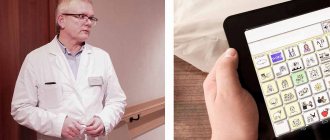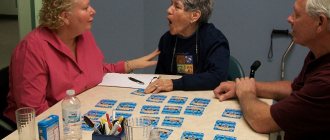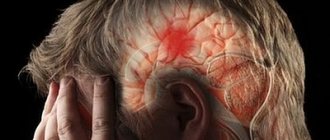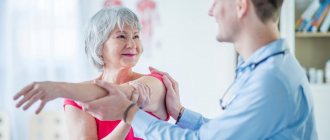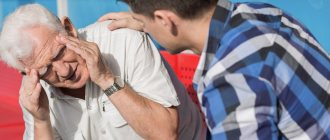Benefits of using stroke rehabilitation products
Patients' recovery is carried out according to an individually designed comprehensive program. Simulators are an important component of comprehensive work that helps:
- Normalize blood circulation . When you exercise, your brain receives an increased amount of oxygen. Thanks to this, blood circulation improves, metabolic processes are normalized, and tissues receive enough nutrients. As a result, the nerve centers of motor activity restore normal functioning.
- Improve muscle tone . After a stroke, hypertonicity is observed in the muscles, due to which they cannot work fully. Rehabilitation exercise equipment for recovery after a stroke helps stabilize coordination and make movements painless and controlled.
- Restore the relationship between the brain and muscle systems . The simulators specifically load the muscles and change the load point, regulate the motor amplitude and stimulate muscle contractions. Thanks to this, the connection between the brain and muscles is restored.
- Take back control of your body and get rid of the feeling of helplessness . As motor abilities are restored, a person will no longer feel helpless, and a normal psychological state and positive attitude, which are so important for a full recovery, will return to him.
What products are needed for rehabilitation after a stroke?
All this is called the rehabilitation process, it takes a long time and is impossible without two components: patience and the right devices. Exercise machines and specially selected designs will help a person who has suffered a stroke avoid:
- muscle atrophy;
- blood stagnation;
- loss of mobility;
- overwork;
- loss of socialization.
Modern medical technologies have reached a level at which most stroke patients, using rehabilitation means, can almost completely restore lost functions. To achieve a full result, experts recommend using a wide range of devices designed both for arranging a bed and for physical therapy. This is of particular importance not only for the patient, but also for the person caring for him, as it significantly facilitates his task.
There is a “basic” set of goods and devices that are recommended to be purchased for a stroke patient, regardless of the severity of his illness.
This:
- Anti-decubitus mattress.
Helps improve blood circulation in the veins and capillaries, gently massages soft tissues, kneads possible areas of blood stagnation. - Lifts for bedridden and/or immobile patients.
They make it easier to move them around the office, transport them around the city, and help with hygiene procedures, taking therapeutic baths, and hydromassage. - Walkers.
They provide additional points of support when walking, help maintain balance and regain lost coordination of movements. - Sanitary chair, bath seat.
These devices not only simplify the procedure for caring for the patient, but also allow you to do this with all possible delicacy. - Exercise machines for restoring motor functions.
They are mechanical, therapeutic and robotic. By exercising on such simulators, the patient restores muscle tone both through a gradual increase in physical activity, and through the action of electrodes, or in a combined way. - Indoor sports equipment.
During the rehabilitation period, muscles, fingers, and joints need to be warmed up almost continuously, even while sitting in front of the TV or while walking. For these purposes, it is necessary to purchase the largest possible range of dumbbells, weights, gymnastic sticks, expanders and balls of various diameters, boards that develop fine motor skills (those sold in children's toy departments are also suitable).
To catalog
To catalog
To catalog
To catalog
To catalog
To catalog
With all this, you need to remember that the last word on the question of which devices and equipment are suitable for your loved one should remain with a specialist.
Types of simulators and equipment for rehabilitation after stroke
Exercise machines that can be used both at home and in a hospital or rehabilitation center help speed up rehabilitation after a stroke. Let's take a closer look at the most popular types and categories of such devices.
Exercise bikes
A device with pedals that simulates riding a bicycle. Most effective for restoring the functioning of the muscles of the legs, back and even arms. The number of muscle systems involved depends on the model of the device.
The exercise bike is suitable for rehabilitation after a stroke even for those patients who cannot sit or stand without support. To start the lesson, you just need to sit the person on the exercise machine, fix your feet on the pedals and turn them with your own hands instead of the patient. There are also more advanced models with an electric motor that pedal independently by moving the attached legs or even arms. This device is controlled using a remote control.
When the muscular system is restored, the patient will be able to move from forced pedaling to independent pedaling. At the same time, a bicycle for rehabilitation after a stroke allows you to control the resistance force of the pedals, the frequency of rotation and the intensity of exercise.
Regular exercise on an exercise bike brings results after about a month. A person coordinates movements better, learns to maintain the body in an upright position, and begins to move his limbs even with an initial lack of control over them.
Arm trainers
Special simulators for hand rehabilitation, which train fingers and hands, help to get rid of muscle atrophy and improve neuromuscular transmission after a stroke.
The most effective device for hand rehabilitation after a stroke is considered to be a robotic glove. It works based on sensors and can be controlled through a computer program. In the glove, you can set the load level and operating mode, thanks to which the device adapts to the individual needs of a person, taking into account the degree of damage to the neuromuscular junction.
Working with simpler hand tools also brings positive results: expanders, rubber rings and balls, dumbbells, bodyboards and even simple plasticine. They restore fine motor skills, use the muscles responsible for extending the fingers and palms, and develop the hands.
Leg exercisers
In addition to the exercise bike, other devices will help restore leg mobility:
- Walkers . Rehabilitation walkers help people after a stroke maintain stability when walking and relieve the fear of losing balance and coordination.
- Treadmill . For rehabilitation after a stroke, the treadmill must have safety rails. There is no need to run on it - just start walking slowly, increasing the pace over time.
- Stepper . Simulates climbing stairs and gives a complex load on the entire body. Suitable for people who already walk confidently and are looking to improve their skills.
Devices for muscle electromyostimulation
Electromyostimulation is a method of restoring the functioning of muscles and nerves, which is based on their electrical stimulation. The approach is used when working with paralysis and paresis.
A special device transmits current with customizable characteristics from the stimulator to the patient’s body through electrodes. When working with the hands, electrodes are placed on the forearm, where the ulnar, radial and median nerves pass. To stimulate the legs, electrodes are fixed in the area of the greater tibial and lesser tibial nerves. After this, pulses are transmitted at a current strength of no more than 5 mA.
The duration of the procedure is 5-9 minutes. With daily sessions, the course lasts about 10-14 days.
Equipment for home and rehabilitation centers
Depending on the capabilities of independent operation and installation location, rehabilitation simulators are divided into two categories:
- For home use . The devices are small in size and have a simple design. They are easy to use independently without medical supervision.
- For use in rehabilitation centers . More complex devices that are distinguished by large dimensions and a complex system of use. It is quite problematic to place such devices at home, but within a rehabilitation medical facility they help patients quickly achieve positive dynamics.
Equipment for bedridden or limited mobility patients
Special devices are needed to make it easier to take medications and feed, perform hygiene procedures, change bed linen, and also make at least minimal exercise and position changes possible.
The lift helps to lift an immobilized person from the bed and move him to a stroller, bath, toilet or other necessary place. The device can be used both at home and in a medical facility. Lifts can be mobile or stationary. The former help to move the patient in space without using a wheelchair, and the latter only help to lift an immobilized person from the bed for further placement in a wheelchair or vice versa.
A rope ladder is another effective device for independently lifting a lying patient out of bed. A person simply grabs the wooden poles with his hands and gradually pulls his body into a sitting or standing position. The staircase allows you to climb without the help of others, trains your arms and body, and also helps get rid of the feeling of helplessness.
Anti-bedsore mattresses and pillows help prevent bedsores. They redistribute loads, stimulate blood circulation and normalize air circulation in areas of contact between the body and the bed. Such mattresses and pillows are selected taking into account the patient’s weight and the degree of his physical activity.
Bicycle and other exercise equipment for rehabilitation after stroke
The threat of becoming disabled, being confined to a wheelchair or bed frightens people. Many myths arise that fuel this fear.
Myth 1: a stroke is a death sentence
The most dangerous misconception is that a stroke is the end of life. After it, nothing good awaits a person, only dull vegetation in the position of a bedridden patient. This myth paralyzes the will of patients, which dramatically reduces their chances of recovery and return to normal life.
According to statistics, cerebrovascular accidents occur annually in 450–560 people per 100 thousand. Up to 39% of victims die due to untimely provision of assistance. The reasons for this are very different:
the person found himself alone at home and could not help himself; those present did not recognize the problem, which is why they called an ambulance late; the crisis occurred in an area remote from the hospital (for example, in the mountains); the victim noticed a sharp deterioration in his health, but attributed it to lack of sleep or fatigue. All this once again proves how important it is to be attentive to your health, especially if you are at risk. It includes people over 40 years of age who lead a sedentary lifestyle, are overweight and/or have cardiovascular disease.
Of the 61% of stroke survivors, 84–87% of victims remain disabled (mostly older people with a “bouquet” of severe chronic diseases). The remaining 16–13% recover completely and return to normal life.
Neurologists and recovered patients are confident that the success of rehabilitation depends 90% on the victim himself. If a person told himself that a stroke is a death sentence, it will become a death sentence. But if the patient is ready to persistently fight the disease, he will definitely recover. There are many cases where people rose from a wheelchair and became athletes.
Myth 2: After a stroke, quality of life decreases sharply
People who are far from this topic believe that post-stroke patients “live at half capacity.” They have to limit themselves in everything, constantly take medications, and avoid strong emotions. In fact, after rehabilitation, people change their lives for the better:
give up bad habits; take care of their health, undergo medical examinations more often; are fond of sports, some even set small personal records; expand your social circle. All this cannot be called a “deterioration in the quality of life.” On the contrary, for people who have survived a severe crisis, it becomes a turning point in understanding their existence.
Myth 3: Physical activity is contraindicated for post-stroke patients
People ignorant of medicine believe that if you have had a stroke, you need to take care of yourself with all your might, “sit still,” and move less. In fact, moderate physical activity is an important part of rehabilitation. Without them, the patient’s full recovery is impossible.
At the stage of late rehabilitation, when the patient begins to sit up in bed, stand up and walk a little, exercise equipment must be included in his recovery program. They are specially designed devices that help post-stroke patients restore motor functions of the arms and legs, coordination, and fine motor skills of the fingers.
Products for the care of stroke patients
Additional tools will help facilitate the care of stroke patients who are bedridden or have limited mobility:
- crutches – facilitate the movement of a sedentary person, help to gain support and restore walking skills;
- rehabilitation suit - special clothing that maintains the correct position of the body and limbs, stimulates the transmission of impulses from the brain to the muscles, and enhances the reaction of the motor-neural system;
- bandage-fixator - a fixation bandage that holds the paralyzed arm in a half-bent position, while controlling its position and preventing injuries;
- toilet chair - a portable toilet with a removable container for excrement;
- seat, bath rails - items that are fixed to the bath to facilitate water procedures;
- additional hygiene products : adult diapers, absorbent linens, diapers and sheets, body cleansers and moisturizers, etc.
When and how to start recovery
Doctors recommend starting rehabilitation immediately after the patient’s condition has stabilized. While still in the intensive care unit, it is necessary to lift the patient and conduct passive rehabilitation exercises.
The most “responsive” recovery period, during which the maximum effect can be achieved, is the first six months after the attack. The period from six months to two years is considered the late recovery stage. When two years pass after a stroke, the patient’s condition will not change significantly.
A physical rehabilitation plan should be developed by a physical therapist. The specialist assesses the degree of loss of motor functions and decides what kind of rehabilitation will help reduce muscle tone, reduce pain, and restore the ability to move independently. He also selects technical means and devices that will make rehabilitation after a stroke as effective as possible at home or in a hospital.
As a rule, rehabilitation begins with light gymnastics and massages. In the first days, you should not subject the body to intense stress. From 8-10 days after a stroke, rehabilitation begins with the help of universal simulators in a hospital setting. After two weeks, you can start training at home according to your doctor’s recommendations. The main thing is to maintain regularity and gradually increase the complexity of the exercises in consultation with a physiotherapist or rehabilitation specialist.
How to treat a stroke with the DIAMAG device
DIAMAG is used to treat the consequences of stroke in the acute, subacute and residual periods of the disease. If in the acute period of cerebrovascular accident treatment is carried out only in a hospital setting, then in the subacute period and the period of residual effects, treatment can be carried out at home.
Before the procedure and after its completion (before and after 20-30 minutes), the patient’s blood pressure should be measured to assess his magnetic sensitivity and the quality of the treatment. To carry out treatment, the emitter is fixed on the head (the input cables are located on the back of the head), the outer inductors are fixed in the frontal part, forming a single system of inductors “Headband”. The working side of the inductors “N” must be directed towards the influence.
For the first 7 or 10 days, treatment is carried out by Program No. 1 (you need to set the appropriate program on the display window), in the next 7 or 10 days - by Program No. 2. Physiotherapy is allowed to be carried out up to two times a day, with an interval of 6 hours. The most effective course of treatment is up to 20 days, however, according to the doctor’s decision, the procedures can be extended. The first two days of the procedure are carried out once a day for 5 minutes, with mandatory blood pressure monitoring.
Repeated DIAMAG treatment procedures are carried out after 1.5 - 2 months.
Alternative Recovery Options
A comprehensive recovery system includes not only work on simulators, but also other rehabilitation methods. To do this, you need to add to the program:
- General exercises to strengthen physical fitness . Light gymnastics, exercises with a Swedish wall, work on the horizontal bar or uneven bars. Even the simplest exercises will bring results: squats supported by handrails, deviations from the crossbar, etc.
- Working on fine motor skills . A person can simply handle small objects, tie shoelaces, fasten and unbutton buttons.
- Favorite hobbies . Reading, drawing, handicrafts - depending on the patient’s capabilities and the degree of damage to motor functions.
- Massage . It is recommended to introduce it as early as possible. The program consists of 20-30 sessions, which are carried out daily or every two days. After this, they take a break for about two months and repeat the course.
- Proper nutrition . The diet must be prescribed by a doctor. It is extremely important that the body receives from food the vitamins, microelements, and nutrients necessary for recovery.
- Communication with other people, walks . Communication with other people helps stabilize the psychological state and promotes recovery.
Rehabilitation after a stroke is a long and complex process that requires patience and effort from both the patient and his loved ones. At the same time, months of intensive work are sure to bring results and help a person return to normal life and motor freedom.
Where to buy exercise equipment and equipment for rehabilitation after a stroke
Exercise machines for rehabilitation after a stroke at home should be purchased only in specialized stores. Devices must have certificates and be accompanied by detailed operating instructions that will help you use the device correctly.
You can select suitable technical means of rehabilitation in the Comfer catalog in the section “Supports for movement”. Our store offers products for the care of bedridden and immobile patients, mobility supports and other aids that are necessary during the recovery period.
Products for rehabilitation after a stroke will make recovery faster and more effective, and hygiene products and supports will greatly facilitate the care of sedentary and bedridden patients.
To place an order, call us at the phone number listed on the website, or request a call back. Our consultants will not only place your order, but will also help you choose suitable hygiene products, devices and exercise equipment. All materials posted on the site are for informational purposes only and cannot be used as medical advice. To make a diagnosis and choose treatment methods, consult your doctor.
Advantages of the DIAMAG device in the rehabilitation of a patient after a stroke
A unique domestic development, whose effectiveness has been proven by numerous clinical trials.
Provides a sedative effect, has a beneficial effect on the nervous system, relieves irritability and anxiety. Returns clarity of consciousness, normalizes hearing and vision. Significantly reduces the risk of complications and relapses, accelerates the recovery of brain function. Improves memory and thought processes. Allows you to significantly reduce the amount of tranquilizers and psychostimulants taken, completely abandon painkillers: relieves pain attacks. Already from the first sessions of use, it improves the quality of life and psychological state - the patient returns to physical activity, coordination of movements improves and the ability to self-care is restored. Easy to use, high-tech, has preset impact programs, which makes it possible to use it at home without special medical knowledge. With DIAMAG, health after a stroke is in your hands!

